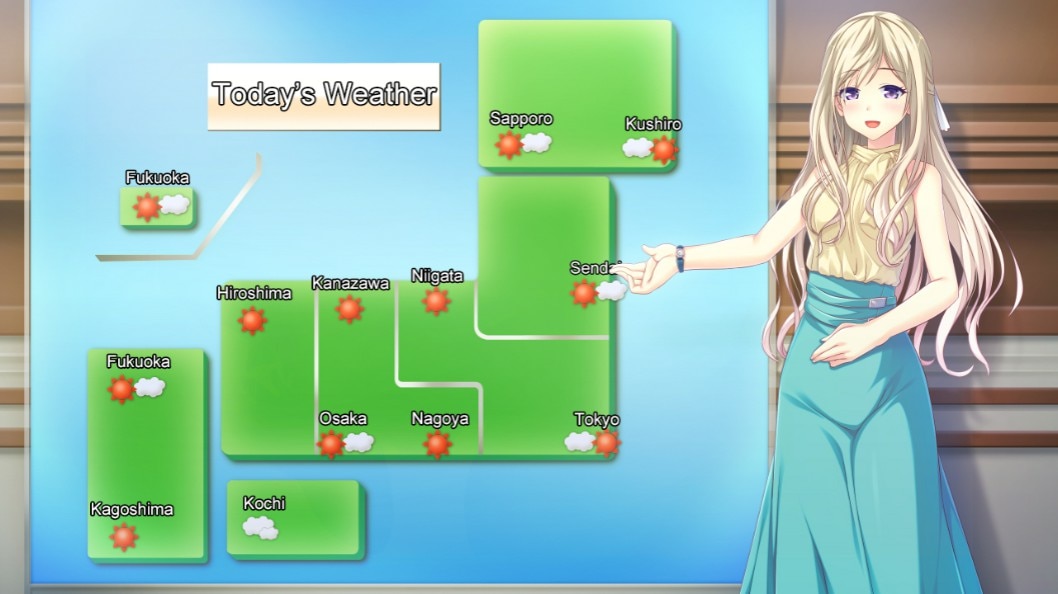School Slice Of Life – Genre Deep Dive
This is a condensed version of the full article which can be found on my Main Blog Here.
The Brilliant Days Of Youth?
Of all the genres that dominate the visual novel space there are none which can compete with the behemoth of school slice of life. Beyond the many games utilising it as their core narrative element, many others use it as a secondary pillar to ground their more fantastical or emotional genres and give them an easily recognisable touch point with the player. Its presence is so prominent that many not familiar with the medium still associate it with this idea of high school aged protagonists leading their daily lives. There is as much diversity as there is repetition in such an expansive genre to the point it can be both a blessing and curse to be associated with it. Let’s go back to school and uncover the enduring popularity and pitfalls of this defining genre.
Transient Freedom And Possibilities
In the Japanese visual novel space the period of life spent in school, in particular high school, holds an idealised quality as a time where the possibilities of life are open to you and you are afforded a freedom absent to an adult. Here can be found the brilliant emotions of youth for all to see with things said in fits of love or hate that would be unthinkable in later life, but in this moment they are looked upon as part of growing up. Alongside this is the sense of the realities of the world not having set in and these teenagers dreaming of future possibilities and experiencing an intense love for another person. Obviously none of this truly reflects the messy truth of hormone driven minds or the chaotic and unpleasant mess school life can be for many people. However, it does not have to since as the memories of that time fade we filter out the painful things we want to forget and remember the good times we did have along the way. The idealised vision of those times taps into this reductionist view of school we form in our heads and uses it as common grounding element visual novels can rely on to serve as a foundation of their stories.

Sabbat of the Witch plays this idealisation fairly straight and focuses in on clubs, school events and other activities outside of lessons. When the lessons and studying inherent to this genre do come up, they are treated as a comfortable mundanity and a desirable place to return to after the characters have overcome their trials. In many ways school slice of life is treated as something with a calming and healing property for both the characters and the player and as a daily life to aspire towards. On the flip side to this relatively grounded presentation of school is Majikoi which makes school take the form of a place characterised by over the top fights, social hierarchies and larger than life characters. Here school is often interrupted by whatever absurd event the game feels like presenting to the player or when the status quo needs to be shaken up. However, under the surface of the sheer insanity that Majikoi cooks up is much the same foundational ideas of school slice of life. It is presented as the baseline normality for a reason and represents the desirable peace the character can always fall back on filled with their friends and a place where they can be themselves. What links these two games is that their vision of school slice of life is not a reflection of the real and messy place school is in practice, but instead a faded remembrance of a time long passed and they hope the audience feels the same.
Flexibility And Inbuilt Drama
One of main reasons visual novel developers choose to embrace the school slice of life genre is the way it can accommodate any story they wish to tell while bringing some easy to access drama of its own. This is a genre which does not demand to be the centre of attention and can comfortably assume a supportive role to a main genre in a smooth process without any tonal clashing. What allows this joining to be possible is generally neutral nature of its primary element, school. Love it or hate it, there is no denying the presence of school in the lives of most people and we consider it normal in the same way as getting a job or having a family, parts of our lives which is barely worth batting an eye at. The school slice of life genre takes these inbuilt preconceptions and uses them to merge into the background and remain unquestioned. Of course, when needed it can introduce its own sources of conflict to compliment the main narrative. These include everything from the heightened emotions of the teenage cast to the school administration acting against the actions of the characters. None of these are strong enough to overshadow a more compelling narrative core, but do wonders at filling downtime with something interesting.

Overuse And The Plague Of Apathy
When discussing the school slice of life genre it is hard to avoid the elephant in the room, its presence in the vast majority of visual novel releases. It has reached the point that having some element of the genre has almost become an expectation and people are surprised when a game does not follow this convention. This has caused a plague of apathy and awkward acceptance among existing players who are not madly in love with this prolific genre. Perhaps more importantly, it makes it difficult to convince a new player to give visual novels a try as they will see it through the preconception that all the medium boils down to is a collection of stories about shouting teenagers and their boring school life. This is a barrier which can be broken down by showing them the many titles and developers who reach beyond the standard trappings of school slice of life with more adult characters such as in Making*Lovers and it focus on older heroines or Steins:Gate’s all consuming tension.

However, it does not look like this trend for the overuse of the school slice of genre is going anywhere anytime soon. The romance genre in particular seems set on adhering to having this as a subgenre in order to provide their players with a comfortable and familiar experience that can reliably sell new games. It is rare for a developer to venture outside of this realm and even when they do it is rarely for more than one game. The noticeable exception to comes in the form of otome which has a good mix of other secondary genres, such a the police thriller aspects of Collar X Malice, but still contains a fair number of school slice of life centric narratives. Overall, it would be nice to see a willingness to expand beyond this limiting sphere of storytelling devices. With all that said there is nothing wrong with this genre as is demonstrated by its continued popularity among players.
Conclusion
School never ends in the world of visual novels as the school slice of life genre continues to dominate and compliment other genres. It invokes a sense of transient reminiscence of a time when we had more freedom and where the world was a beautiful web of possibilities in order to resonate with the player. The way school slice of life can merge into the background of other genres is a testament to its relatively neural nature while still being able to offer some conflicts of its own to supplement the main narrative. However, the overuse genre has created a general plague of apathy towards games using it and makes it difficult to overcome the preconceptions new players have regarding visual novels being all the same. The strength and popularity of the genre is clear to see with every new release that uses it, but it can be a doubled edged sword for the medium as a whole and limits the stories it can tell.



1 Comment
Recommended Comments